
17 Feb What’s Special About the Bologna Book Fair?
By Gita Wolf
After a gap of four years, as we happily prepare to attend the 2023 Bologna Children’s Book Fair, what seems downright odd to me now is how much convincing it took to get me (and Tara Books) to this beautiful event in the first place.
The first international rights fair we attended—the Frankfurt Book Fair—was in 1994. Back then, my partner Helmut Wolf and I had the temerity to show up at this overwhelming marketplace with just a couple of sheets that contained the germ of a few book ideas. It went remarkably well in the end, all things considered, but that’s another story. While we were there, we happened to hear of a place called Bologna, which hosted an international children’s book fair. Helmut said he’d try to stop by there the following year, if he happened to be in the neighbourhood. He did manage to get there: standing in a packed overnight train from Germany, with a heavy bag of books—which we’d produced by that time—and a hopeful catalogue of forthcoming titles. He walked around with his bag, talking to any publishers who would see him without an appointment. Not too much happened. But he met some interesting people, among them a Canadian publisher who told him, “We only do square books.” So much for that; and Bologna passed out of our ken.

Early days at the Frankfurt Buchmesse
Until a few years later, at Frankfurt, an Italian literary agent called Guido Lagomarsino came by and began to court us seriously. We had a modest list of interesting titles, by then, and were beginning to build a small reputation for books that defied conventional expectations… but an agent was something we didn’t consider at all. Our enterprise was too small and eccentric—and literary agents were beyond our pay grade. But Guido persisted, and as we discovered more about his style of functioning—a kind, at times scattered, uniquely personal, down-to-earth approach—it disarmed us completely. We got on board. In 2001, Guido managed to find us an Italian co-publisher, MC Editrice, who bought the rights to our book Toys and Tales with Everyday Materials. He then went on to help with the translation from English to Italian, at almost no cost, just because he believed in the book and in us.
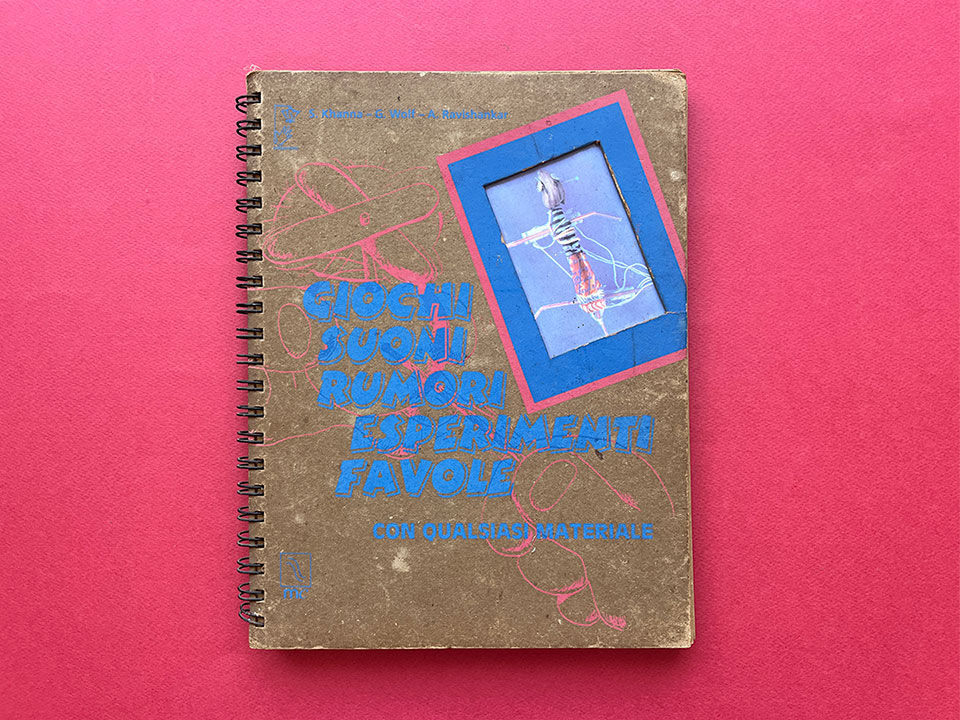
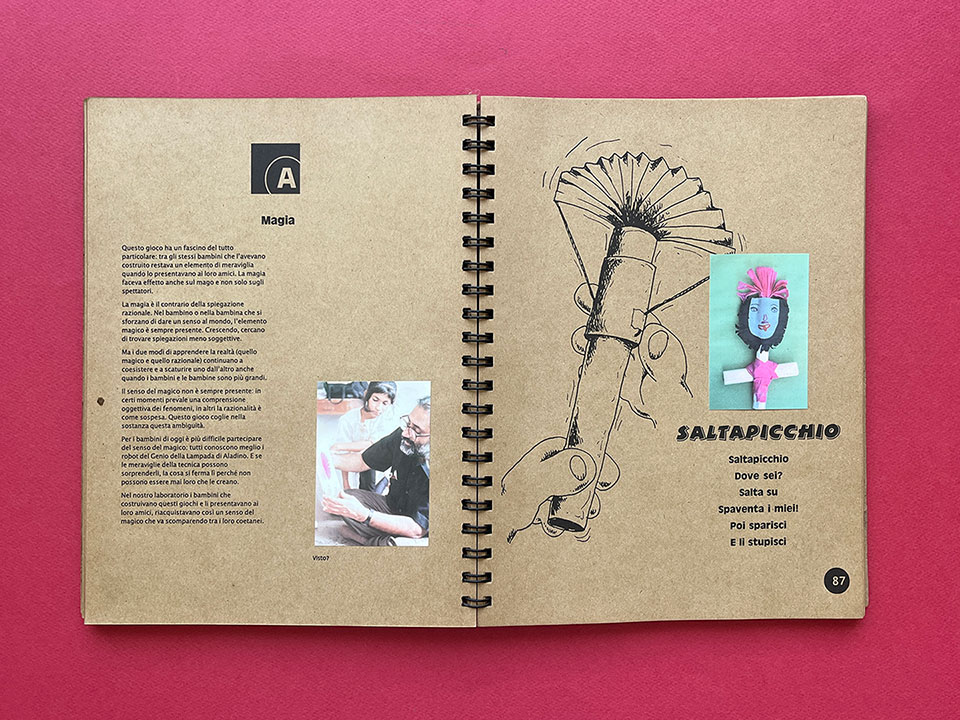
The Italian edition of Toys and Tales
Meanwhile, he kept persuading us to come to the Bologna Book Fair. I’d heard that it was expensive to get there, to stay there, and to hire a stand. “Just come!” pleaded Guido. “I’ll arrange everything!” I caved eventually, in 2002, and flew to Milan along with a colleague. Guido lived there; and true to his word, he picked us up at the airport and drove us home. The next day, we drove to Bologna. Guido had arranged for us to stay with an old friend of his, Mara Zauli who had a small apartment in the centre of the city. It turned out that he and Mara were old comrades, from back in the day when the left and feminist movements were strong in Italy. We took to each other right away—Mara was more than happy to host us and we ended up staying with her for (seriously) the next 12 years. We still meet every year and have dinner together. It turned out that she and Guido had several close friends in common, people who saw the world in a similar way: so I too made friends in Bologna, was invited to their homes, and experienced what I can only call the warmth that comes with true connection—in spite of the fact that many of them didn’t speak English. That’s the thing with old feminists.
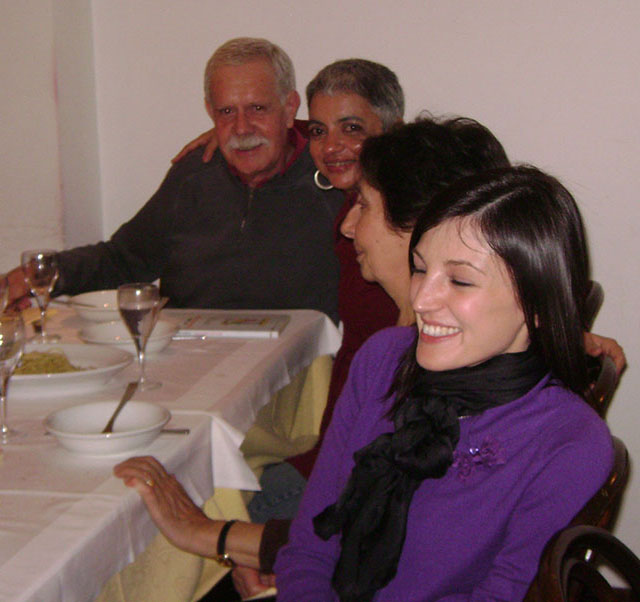
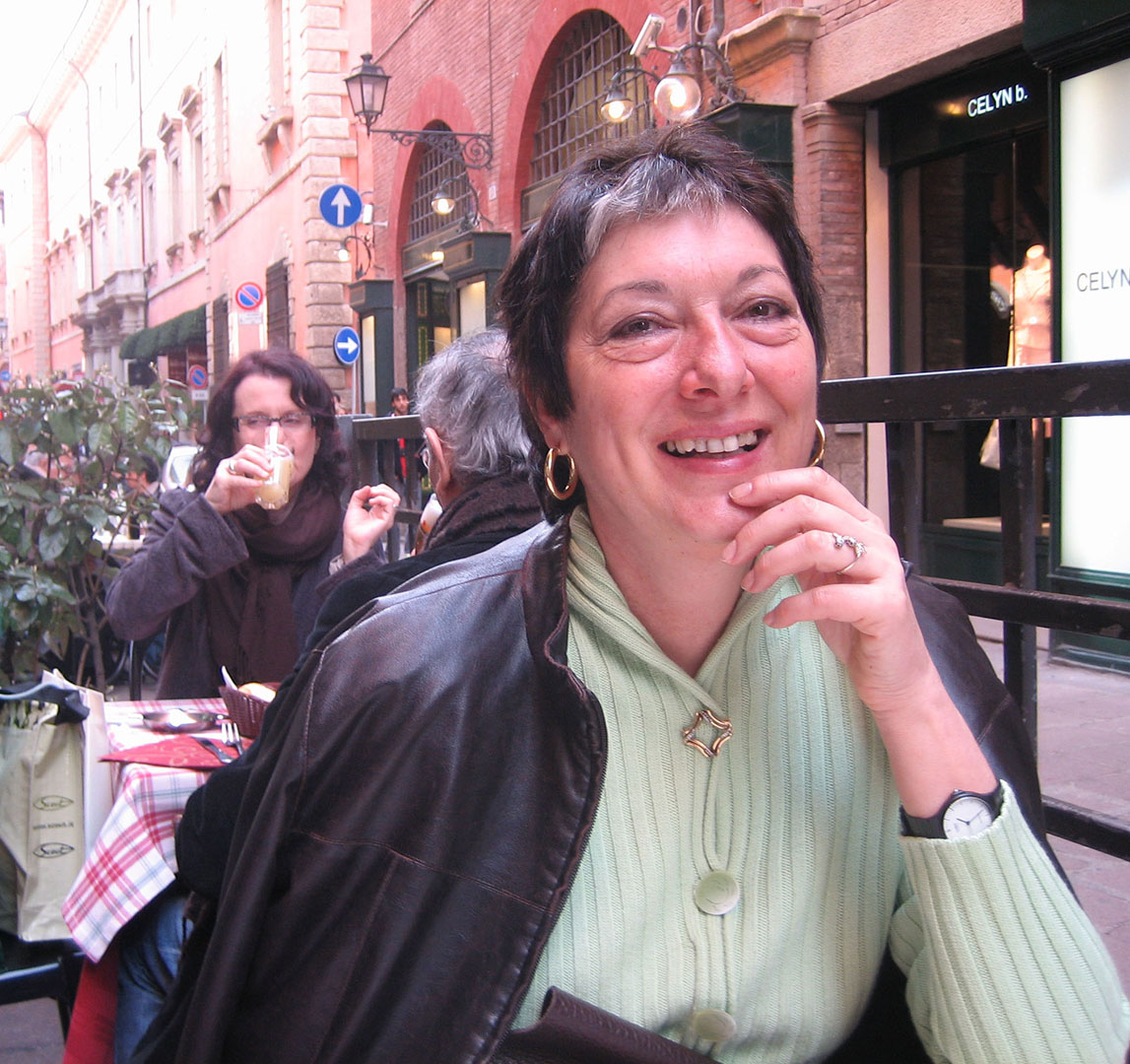
Guido and Gita with friends (L), Mara
But to return to the fair: Guido had arranged for us to share a stand with Michaela Bianchi, the head of MC Editrice, the independent educational publisher who had brought out Toys and Tales. That first year was moderately successful for us, with some rights enquiries coming in, and we became confident enough to think of coming again the following year… which turned into the next 17 years, to date, and counting. We wouldn’t miss it for the world if we could help it—only the pandemic interrupted our unbroken commitment.
All in all, it’s been an extraordinarily successful run for us at the fair. Apart from important rights contracts, we won two Bologna Ragazzi Awards, in 2008 for The Night Life of Trees and in 2010 for Do!. In 2012, Waterlife got an Honourable Mention. And we won the Bologna Prize for the Best Children’s Publisher in Asia in 2013. We’ve held events and exhibitions, and met generous people who took our publishing vision to places we couldn’t have dreamt of.
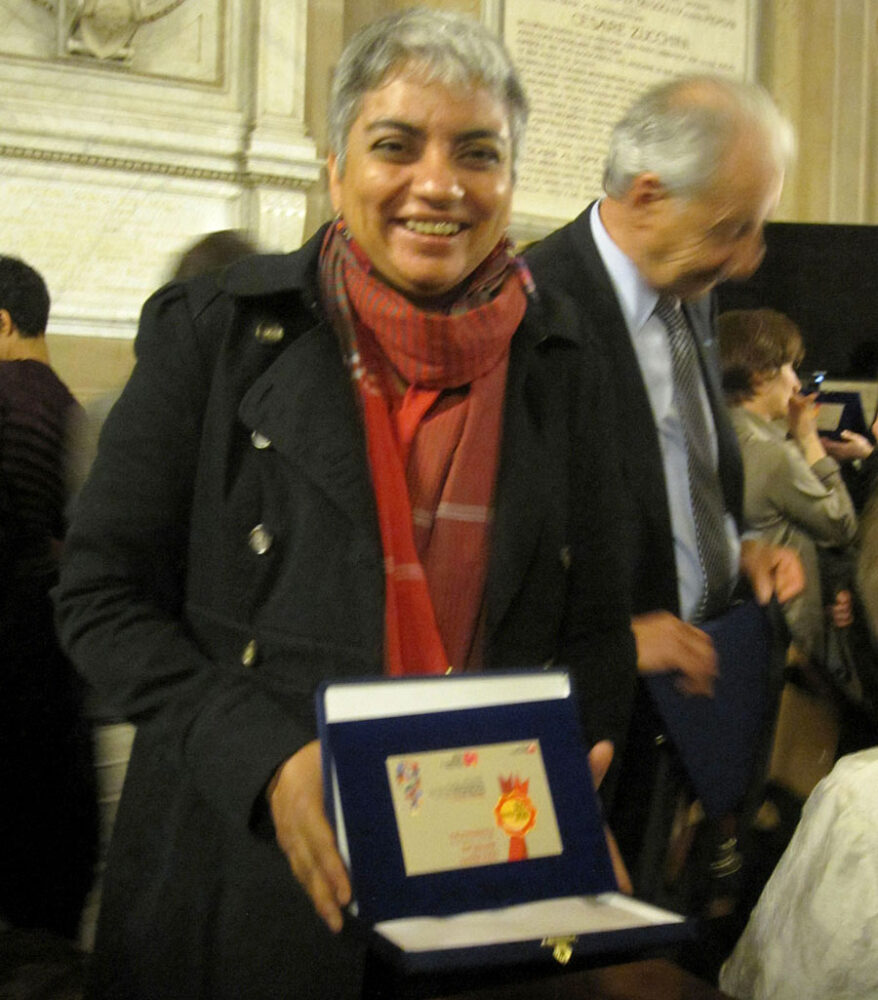
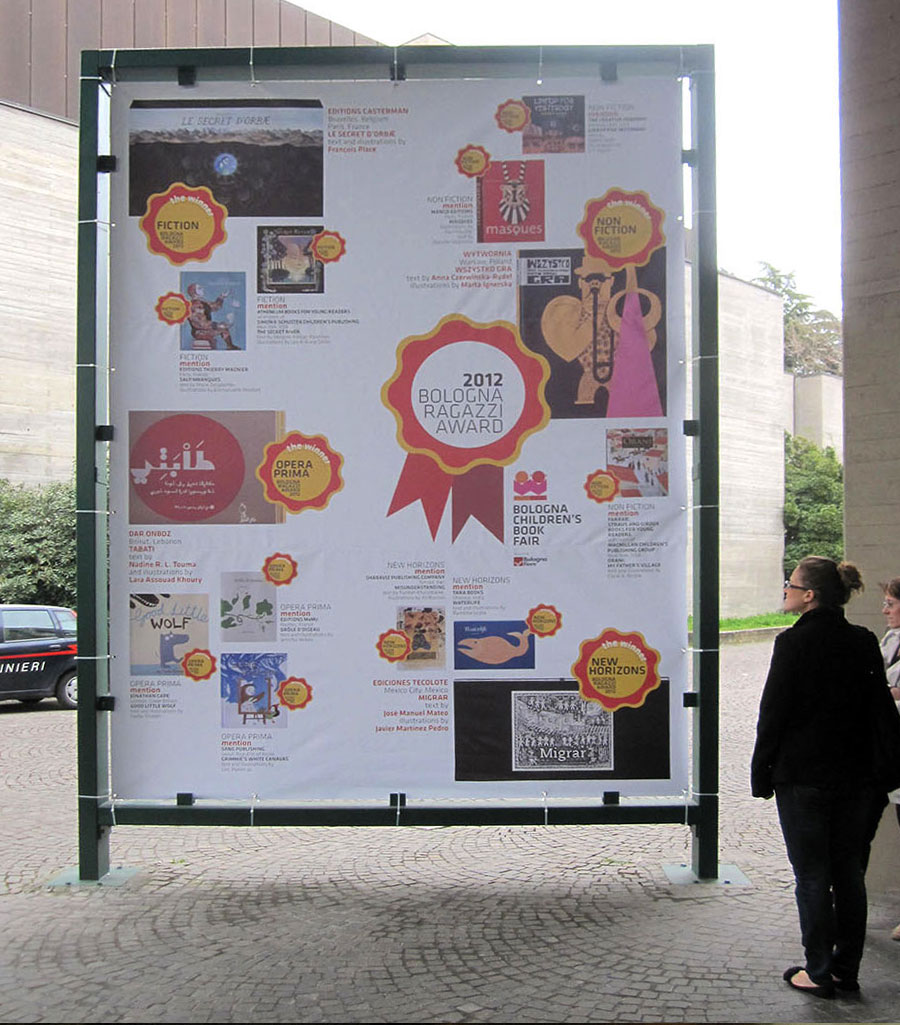
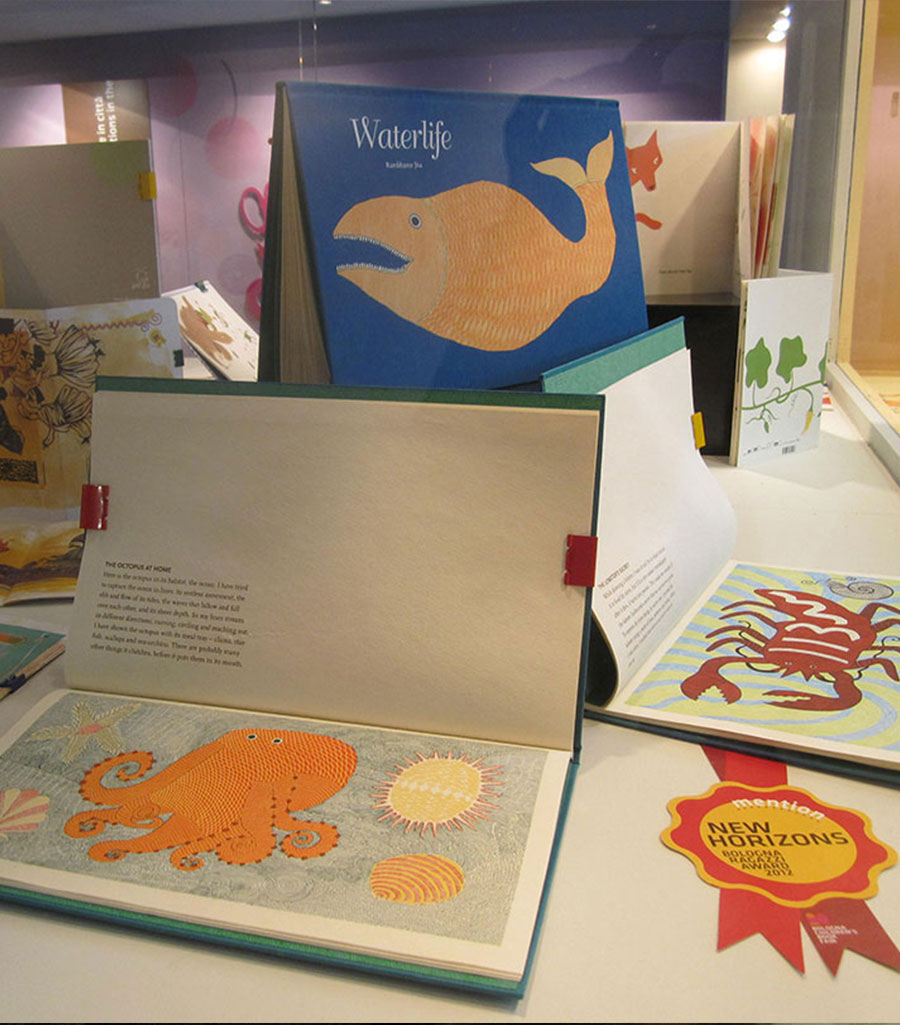
Awards from the Bologna Children’s Book Fair
In 2008, I met the highly regarded Elizabeth Lotric, who ran an organisation in Paris called Les Trois Ourses. There was an immediate connection, followed by a lasting friendship. It’s hard to define what Les Trois Ourses did—it was run by librarians and other creative people, who basically supported unusual and artistic books for children in any way they could. From hosting artists and exhibitions to connecting creative people and selling books at their store, the enterprise was a labour of love and conviction. One of the artists they promoted was the marvellous Japanese designer and children’s book creator Katsumi Komagata. Another was the brave, innovative publisher Peggy Espinosa from Mexico, who single handedly ran Petra Ediciones, her small independent publishing house. Soon it was decided that we all form a group called Small World, and present our work at a collective stand at Bologna. From 2010, this is what we’ve been doing—with great support from Elena Pasoli, the director of the fair, and her wonderful team. The Small World stand brings together a unique set of book creators from four continents…and the number of visitors who drop by is truly gratifying. From this hub in Bologna, we’ve managed to create a lasting network—with exhibitions, workshops and exchanges between ourselves. Respect and affection is what still keeps us together, even after all these years.
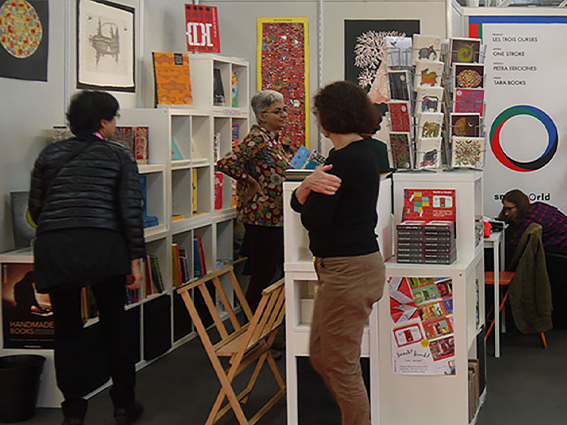
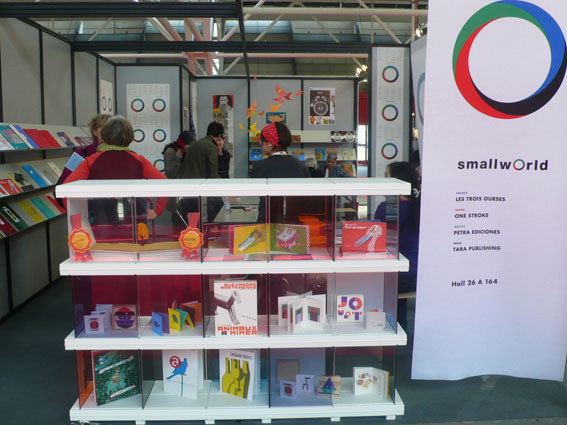
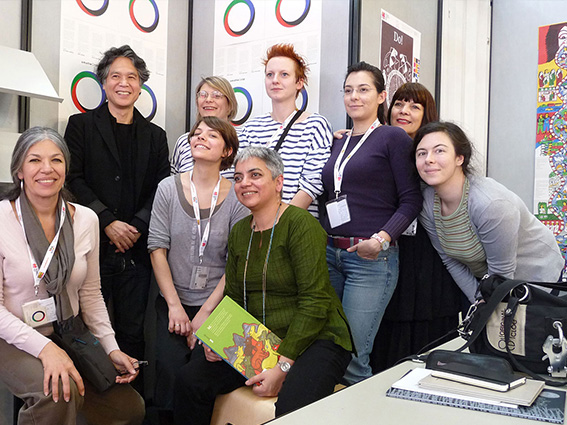
Photo Credit: Peggy Espinosa
Gita with Katsumi and the Small World group
Another key relationship I formed in Bologna was with Kiyoko Matsuoka, the curator of the Itabashi Museum in Tokyo. She brings the Bologna Illustrators Exhibition to her museum every year, to great acclaim. We were together as part of the Bologna Illustrators’ Jury in 2013 (which turned out to be a memorable experience in other ways as well – a derelict, snowed in and freezing fair ground in January). Sometime after this, Kiyoko invited me over to hold a summer workshop with Japanese illustrators at her museum in Tokyo—which in turn led to our long standing collaboration with Kaori Takahashi, Koki Oguma and Nao Saito. In 2017, Kiyoko then proposed to host a Tara Books exhibition at the Itabashi Museum in the coming year. We worked closely together to make it happen, and realised how little we knew about producing an exhibition, and how much there was to learn. Called Beautiful Books Can Change the World, it opened in November of 2017. We heard later that the exhibition had attracted an incredible 18,000 visitors. After Tokyo, it travelled to four other venues in the country. All of us, including Kiyoko, were completely taken aback by the response… and most gratifyingly, the exhibition appears to have consolidated our great reputation in Japan. Who would have thought?
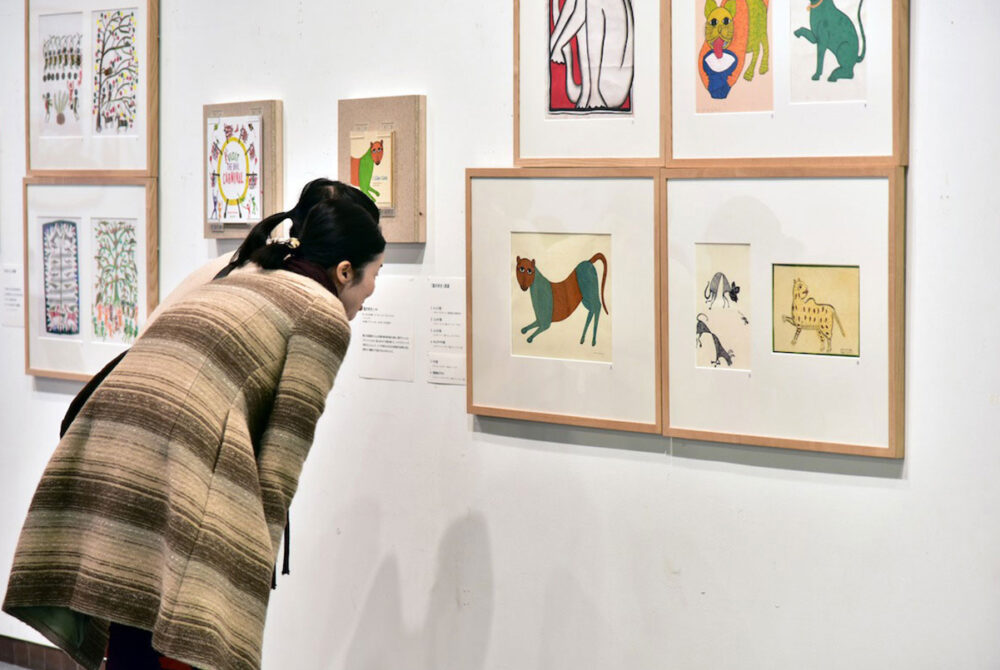
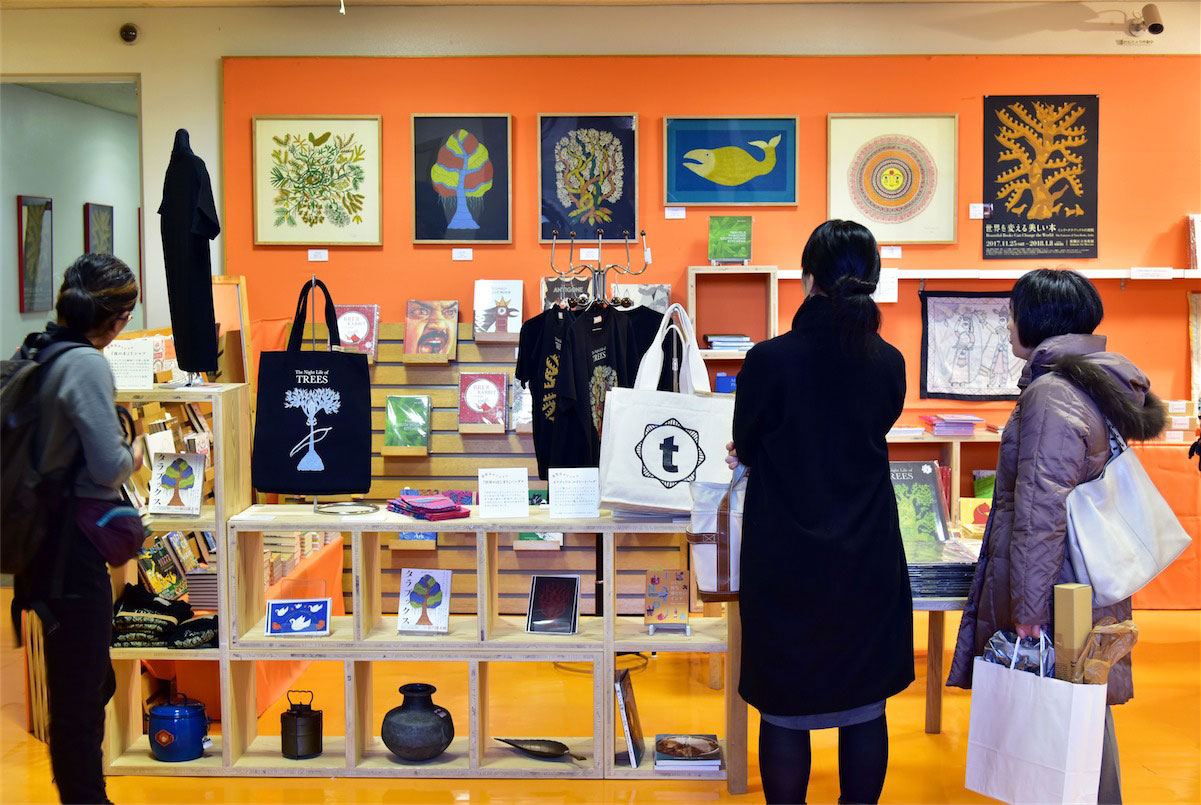
Photo credit: Kodai Matsuoka
A Tara Books exhibition titled ‘Beautiful Books Can Change the World’ at Itabashi Art Museum in Tokyo, Japan
In a sense, all fairs are about making valuable professional connections, and the publishing industry is a largely civil and welcoming space. And yet there is something singular about the rich, lasting rewards that we’ve experienced from the Bologna Book Fair. Thinking over what makes it so, my mind goes back to the time we first shared a stand with the Italian publisher Michaela Bianchi. I remember that at the very first opportunity, we were invited to visit her publishing house. Always a special experience for a publisher, it’s a chance that doesn’t usually come our way, despite all the fairs we attend. It turned out that this was not an unusual thing, as far as Bologna and Italian publishers were concerned. Over the years, as we found more interest in our books in Italy, we were regularly invited to visit our co-publishers—Gallucci Editore who published Italian copies of The Book Book, The Enduring Ark and others, Adelphi Edizioni who bought the Italian rights for The London Jungle Book and The Mahabharata: A Child’s View, Adriano Salani Editore who published Creation, I Like Cats, The Night Life of Trees and more, and finally Giangiacomo Feltrinelli Editore who published Four Heroes & a Green Beard and Four Heroes & a Haunted House. The fact that publishing (at least independent publishing) is basically an individual vision is really embodied in this very human way of connecting.
I realised that this is in essence what the Bologna Book Fair enables, and in my view, what makes it different from other book marketplaces. It is not very large, and the fact that it is a children’s book fair gives it a certain cosiness. It helps of course that Bologna is a lovely city and everyone looks forward to the memorable dinners that are part of the experience. And yet there is an undefinable warmth and intimacy to the fair itself—the way it is set up, the people who run it, the people who take part and visit—the scale is human and connected. The energy this generates somehow spills over—it makes people more accessible; and even though publishing decisions need to be ultimately taken with self-interest in mind, the process doesn’t have to be purely transactional. Along the way, there are encounters which—seen in a certain light—need not lead to anything concrete right away… but they are still enriching in a tangential, creative way. And you never know what will come of them.
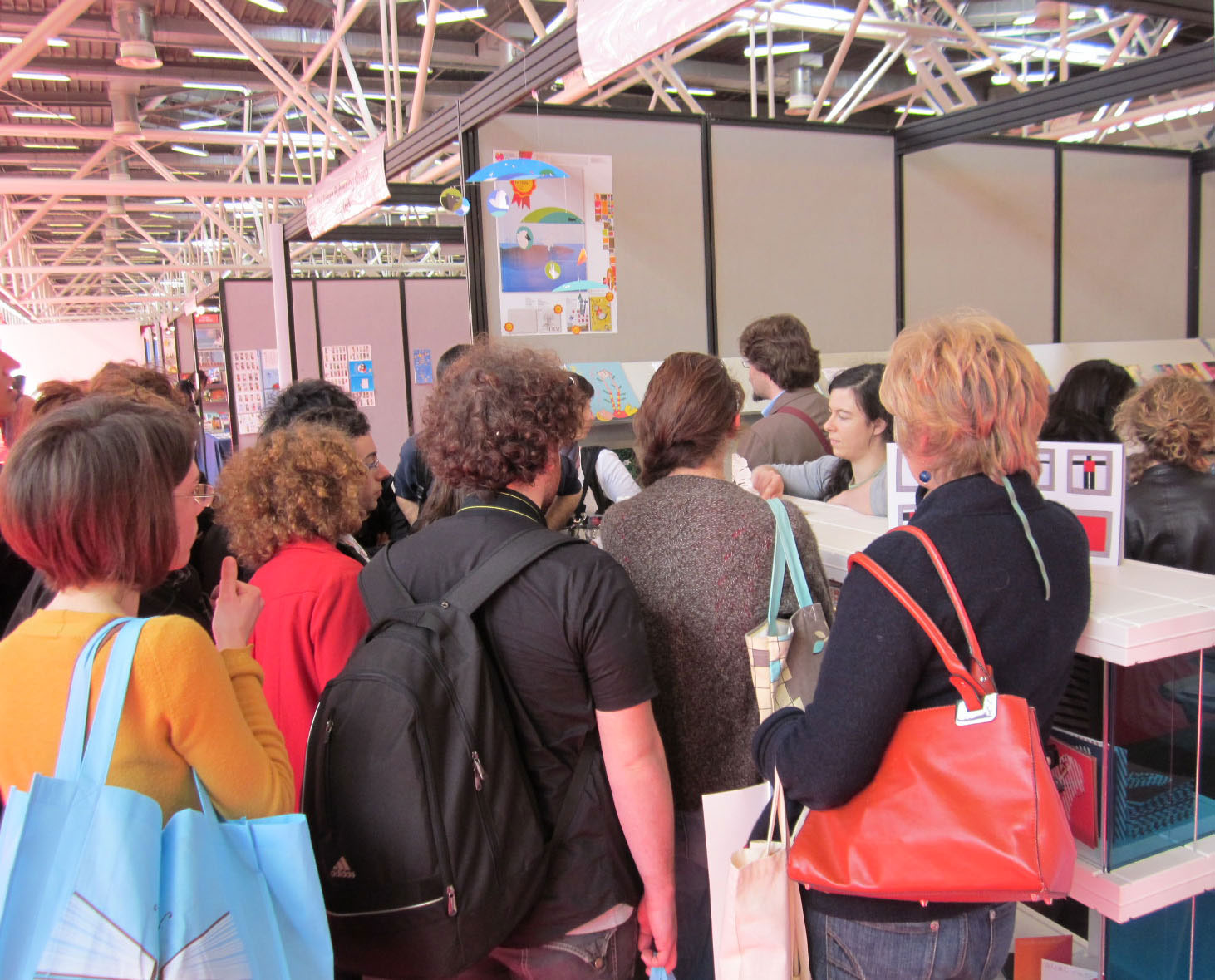
Photo credit: Katsumi Komagata
Visitors of the fair at one of the many stalls set up by publishers from around the world
That’s the other thing about the Bologna Fair: like most rights fairs, it is basically set up to facilitate international exchange, where publishers from around the world can meet and trade. But there is one more strong focus here: and that is on the creative aspect of publishing, particularly illustration and book making. Along with exhibitions, events and prizes, the fair enables creative matchmaking—it really is a mecca for hopeful illustrators from around the world. For me, walking past the enormous illustrators’ pin board with hundreds of contacts and samples is strangely moving (and humbling). When I see scores of young artists sitting around on the floor in the foyer or waiting patiently in line outside a publisher’s stand, I’m curious about the optimism which draws them to children’s publishing. It’s a tough business, by any standards, and I have to admire their idealism and tenacity. It’s uplifting. In a sense, this is what keeps us doing what we do.
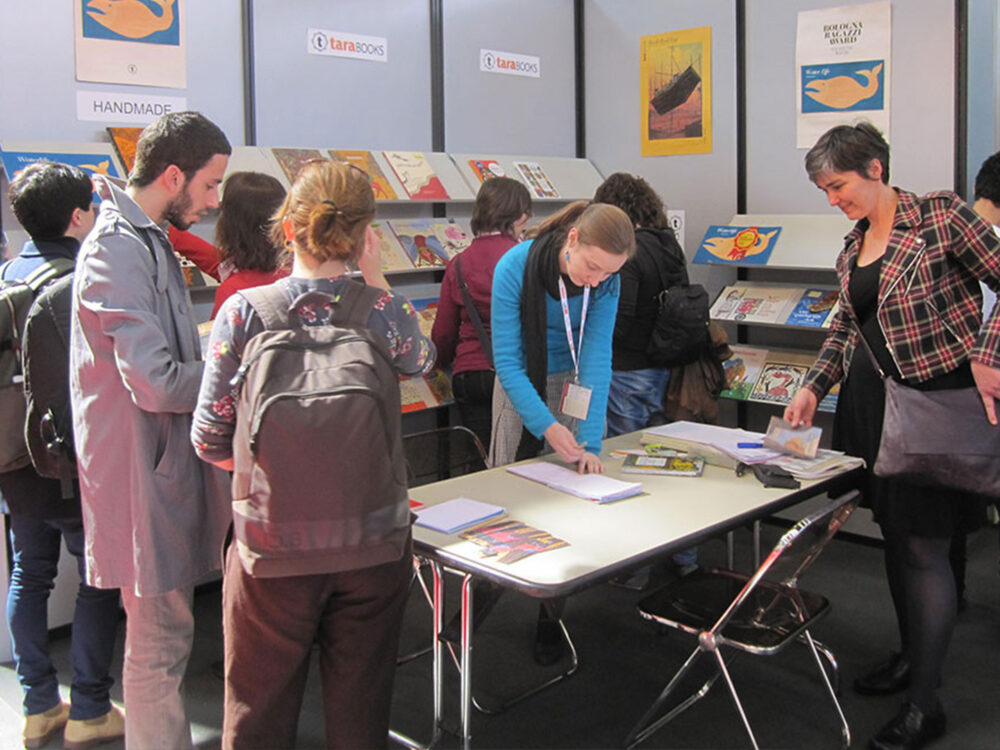
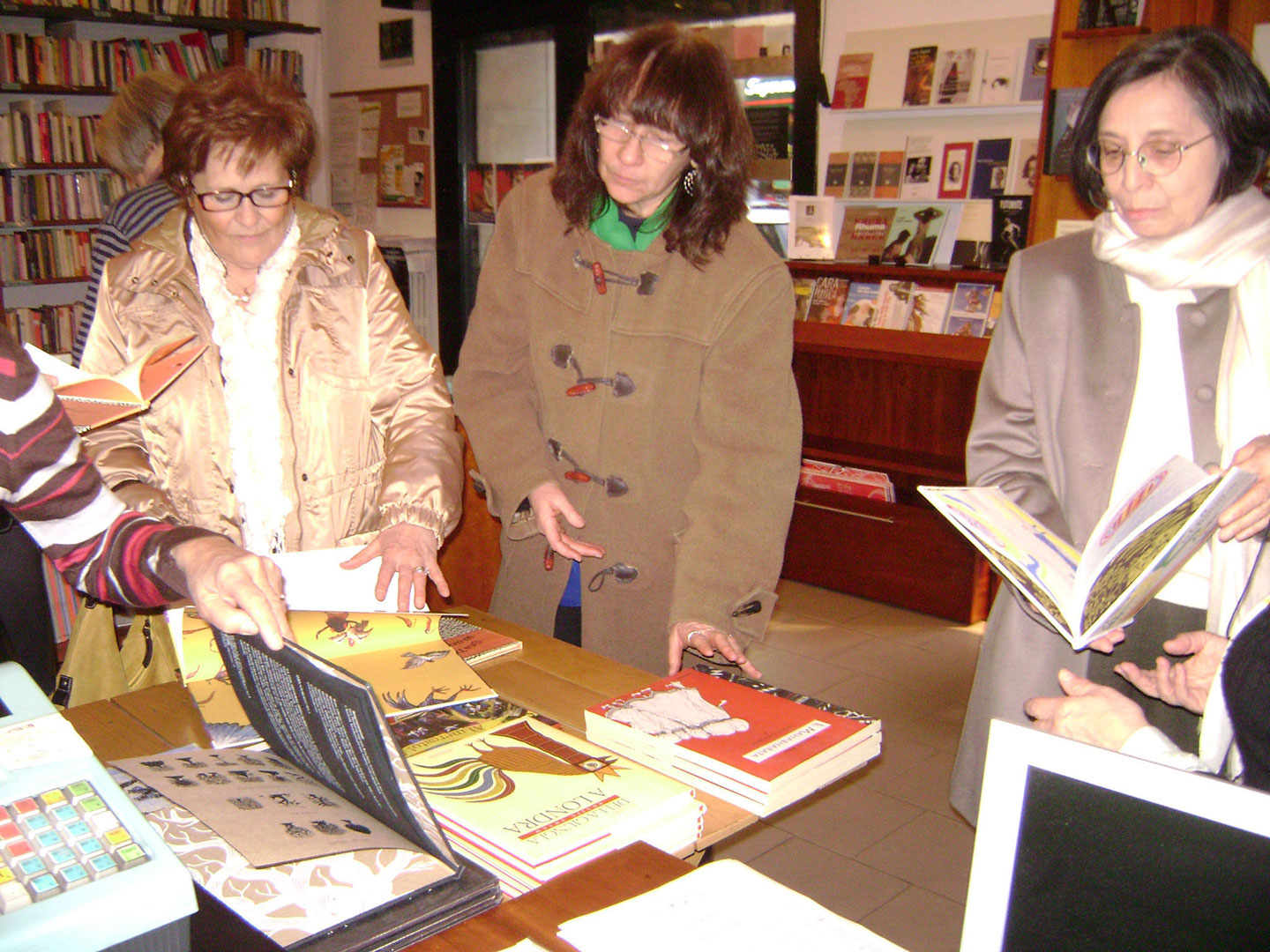
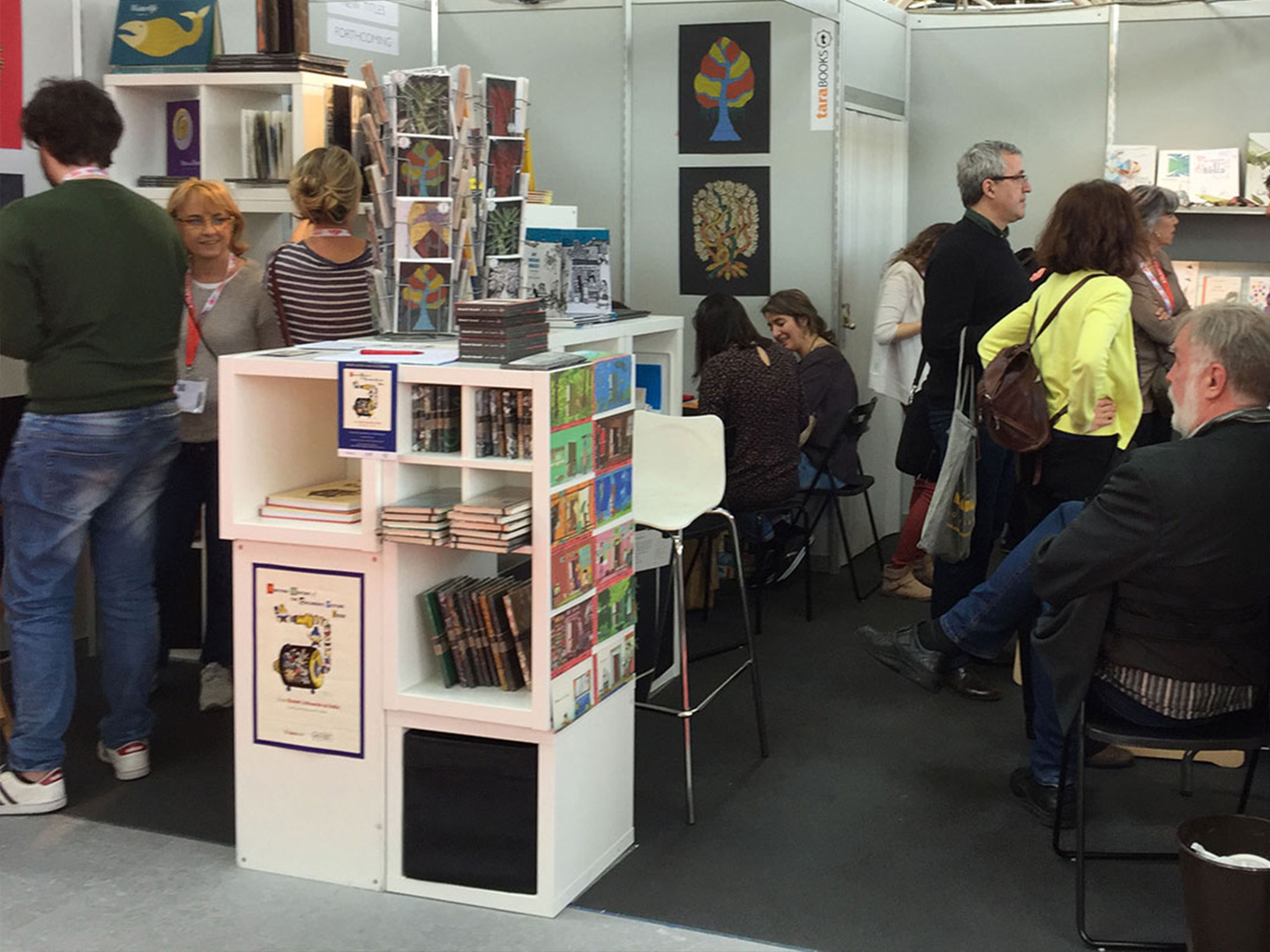
Photo credit: Katsumi Komagata
Tara Books at the Bologna Children’s Book Fair over the years
Of course, a lot has changed for us in the meantime, over the years—Guido has retired, and so has Elizabeth; our good friend Roberto Calasso has passed away, editors we knew have moved on, publishing houses have changed hands—but the spirit that infuses Bologna lives on, and we look forward to coming back, as long as we can.
P.S. Just as we were about to go live with this post, we received a message from the Bologna Book Fair: our book A Stitch Out of Time has been included in the BRAW Amazing Bookshelf, a selection of 100 outstanding picture books that will be showcased at the fair this year.
Gita Wolf started Tara Books, as an independent publishing house based in India. An original and creative voice in contemporary Indian publishing, Gita Wolf is known for her interest in exploring and experimenting with the form of the book and has written and over twenty books for children and adults. Several have won major international awards and been translated into multiple languages. Click here to discover Tara books she has authored.



No Comments